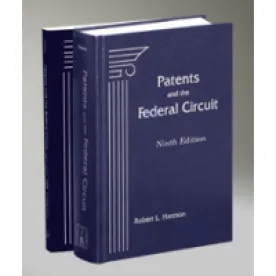Takeaway: An admission of prior art in the specification of the challenged patent can be the basis for inter partes review even if the prior art is not a patent or printed publication. Further, commercial success that shows significant sales in the relevant market, rapid ascension to the dominant position in the relevant market, and eclipsing of all other competing technologies may be sufficient to overcome a finding of obviousness.
In its Final Written Decision, the Board determined that Petitioner had not met its burden of showing that claims 1-10 of the ’640 Patent are unpatentable under 35 U.S.C. § 103(a). The Board also granted in part Patent Owner’s Motion to Exclude, and denied Petitioner’s Motion to Exclude. The ’640 Patent is directed to improving Winchester disc hard drives, and claims a hard disk drive with a pivot bearing assembly located in a bore of an actuator arm.
The Board first addressed claim construction, stating that the claims are given their broadest reasonable interpretation in light of the specification of the patent in which they appear. The Board first construed the term “unformed annular portions,” adopting a modified version of Patent Owner’s construction. The Board then construed “a guide portion extending from the band” to include guide portions that extend from, and are immediately contiguous with, any portion of the band.
The Board then addressed the parties’ objections and motions to exclude evidence. Regarding Patent Owner’s Objection to Petitioner’s Reply, the Board found the portions to which Patent Owner objected were within the proper scope of a reply and overruled the objection. Regarding Patent Owner’s Motion to Exclude paragraphs of Petitioner’s expert’s declaration, the Board excluded those paragraphs on the basis that the declaration was filed with the Reply and included evidence that exceeded the scope of a reply. The Board denied Petitioner’s Motion to Exclude certain evidence, finding Patent Owner had established their authenticity and there was no danger that the Board would be confused by the exhibits.
The Board then turned to the question of whether the instituted claims are obvious over the Admitted Prior Art and Wing. Patent Owner challenged both the Admitted Prior Art and Wing as being outside of the scope and content of the prior art. Patent Owner stated that the Admitted Prior Art is outside of the scope because it is not a patent or printed publication. However, the Board found that a patent applicant’s admissions can be used as prior art in an inter partes review proceeding.
Patent Owner then argued that the admissions were a mistake and should be recanted based upon testimony of the inventors. The Board found that the inventor testimony was not legally effective to recant the admissions, and that even if the admissions were recanted, it would not affect the Board’s analysis. Patent Owner then argued that Wing is not analogous art to the ’640 Patent. The Board stated that the problem to be solved must be defined more broadly than presented by Patent Owner, and held that Wing falls within the scope and content of the prior art.
The Board then discussed secondary considerations of non-obviousness. Regarding commercial success, the Board cited to the success of Patent Owner’s product as showing commercial success. The Board found that Patent Owner produced sufficient evidence that the market demand for the product is attributable to the claimed invention, and was not persuaded by Petitioner’s evidence to the contrary. Specifically, the Board found that Petitioner’s own evidence showed that it created its product because of customer demand for the claimed invention. The Board also reviewed Patent Owner’s allegation that Petitioner copied its design. The Board recognized similarities between the two products, and dismissed Petitioner’s allegations that its product was created because of customer demand, finding that if the customers had access to the patented product, then Petitioner cannot insulate itself from accusations of copying by receiving such information from customers.
The Board then stated that it agrees with Petitioner that the Admitted Prior Art and Wing disclose all of the limitations of claim 1, and found that Wing provides motivation to combine it with the Admitted Prior Art. However, the Board found that Patent Owner’s case for non-obviousness based on secondary considerations was particularly strong and outweighed the other three factors because the patented invention achieved significant sales in its relevant market, rapidly ascended to the dominant position in the relevant market, and eclipsed not only other tolerance rings, but other competing technologies as well. The Board therefore found that commercial success alone was enough to outweigh the other obviousness factors, and that the finding of copying further strengthens the finding.
Intri-Plex Technologies, Inc. v. Saint-Gobain Performance Plastics Rencol Limited, IPR2014-00309
Paper 83: Final Written Decision
Dated: March 23, 2015
Patent 8,228,640 B2
Before: Michael W. Kim, William A. Capp, and Frances L. Ippolito
Written by: Capp



 />i
/>i
